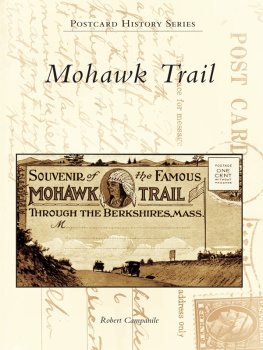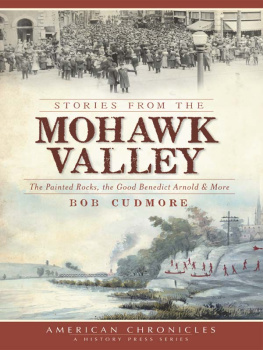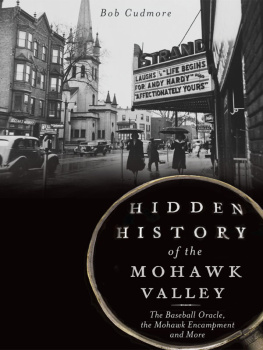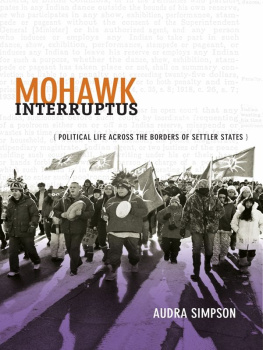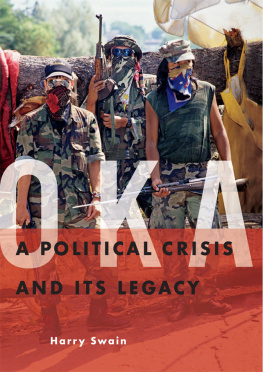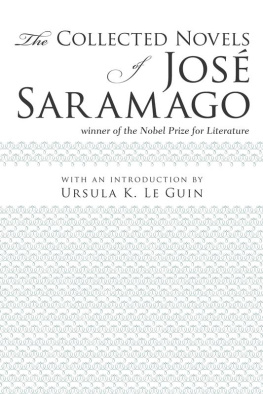José Barreiro - Thinking in Indian: A John Mohawk Reader
Here you can read online José Barreiro - Thinking in Indian: A John Mohawk Reader full text of the book (entire story) in english for free. Download pdf and epub, get meaning, cover and reviews about this ebook. year: 2014, publisher: Fulcrum Publishing, genre: Politics. Description of the work, (preface) as well as reviews are available. Best literature library LitArk.com created for fans of good reading and offers a wide selection of genres:
Romance novel
Science fiction
Adventure
Detective
Science
History
Home and family
Prose
Art
Politics
Computer
Non-fiction
Religion
Business
Children
Humor
Choose a favorite category and find really read worthwhile books. Enjoy immersion in the world of imagination, feel the emotions of the characters or learn something new for yourself, make an fascinating discovery.
- Book:Thinking in Indian: A John Mohawk Reader
- Author:
- Publisher:Fulcrum Publishing
- Genre:
- Year:2014
- Rating:3 / 5
- Favourites:Add to favourites
- Your mark:
- 60
- 1
- 2
- 3
- 4
- 5
Thinking in Indian: A John Mohawk Reader: summary, description and annotation
We offer to read an annotation, description, summary or preface (depends on what the author of the book "Thinking in Indian: A John Mohawk Reader" wrote himself). If you haven't found the necessary information about the book — write in the comments, we will try to find it.
Thinking in Indian: A John Mohawk Reader — read online for free the complete book (whole text) full work
Below is the text of the book, divided by pages. System saving the place of the last page read, allows you to conveniently read the book "Thinking in Indian: A John Mohawk Reader" online for free, without having to search again every time where you left off. Put a bookmark, and you can go to the page where you finished reading at any time.
Font size:
Interval:
Bookmark:


2010 Jos Barreiro
All rights reserved. No part of this book may be reproduced or transmitted in any form or by any means, electronic or mechanical, including photocopying, recording, or by an information storage and retrieval systemexcept by a reviewer who may quote brief passages in a reviewwithout permission in writing from the publisher.
Library of Congress Cataloging-in-Publication Data
Mohawk, John, 1945-2006.
Thinking in Indian : a John Mohawk reader / edited by Jos Barreiro.
p. cm.
Includes bibliographical references and index.
ISBN 978-1-55591-738-8 (pbk.)
1. Seneca Indians--Social life and customs. 2. Seneca Indians--Economic conditions. 3. Seneca Indians--Politics and government. 4. Seneca Indians--Civil rights. 5. Mohawk, John, 1945-2006--Philosophy. 6. Indian philosophy. 7. Indians of North America--Social life and customs. 8. Indians of North America--Economic conditions. 9. Indians of North America--Politics and government. 10. Indians of North America--Civil rights. I. Barreiro, Jos. II. Title.
E99.S3M64 2010
974.7004975546--dc22
2010019989
Printed in the United States by Malloy Inc. on FSI-certified paper
0 9 8 7 6 5 4 3 2 1
Design by Jack Lenzo
Cover photograph Claus Biegert
Fulcrum Publishing
4690 Table Mountain Dr., Ste. 100
Golden, Colorado 80403
800-992-2908 303-277-1623
www.fulcrumbooks.com
For Ernie and Elsie Mohawk; and for John Mohawks generations, blood, heart, and mind
Introduction
John Mohawks Essential Legacy:
The Sovereignty Which is Sought Can Be Real
I
In Wakpala, South Dakota, June 1974, at the first International Indian Treaty Council, the chiefs from the Lakota Treaty Council requested that John Mohawk speak. The Wakpala meeting was a seminal moment for the world indigenous movement. With more than two thousand people in attendance from various nations, councils of elders, educators, organizers, and major activists of the American Indian Movement (AIM) decided on an international strategy of Indian rights. They would take the cases of American Indian peoples to the United Nations and the world arena.
At least half a dozen vigorous AIM speakers and other leaders from the host region were ready to talk at the meeting. But when the elders asked John Mohawk (Sotsisowah, Corn Tassel), a Seneca man from the eastern woodlands of the Six Nations Confederacy, to provide his thoughts to the gathering, nobody could object.
John was just twenty-eight years old at Wakpala, but he was already an elder voice in the widespread traditionalist and Native rights movement of which AIM was a militant sector.
Among the Haudenosaunee longhouses, John was a respected lifelong ceremonialist and a superb singer of the ancient song cycles. He had emerged to prominence, naturally and with certainty, as a thinker, philosopher, and strategist who dutifully helped out the longhouse clanmothers and chiefs in land rights and other treaty rights and nation issues. John spoke often at traditionalist gatherings and was a traveler-lecturer-writer on the Iroquois communications group White Roots of Peace, based at the Mohawk Nation with the Native advocacy journal Akwesasne Notes.
At Wakpala, John titled his speech, The Sovereignty Which Is Sought Can Be Real. It was published in Akwesasne Notes the following year, 1975.
The Wakpala addressone in a very long run of speeches and writingscame at an important juncture of the American Indian activist movement. Native people were embarking on the difficult task of projecting an international representation of multiple communities and nations. John was at the meeting as a proponent of the international strategy.
By the early seventies, adopting an Indian rights strategy that would go beyond national borders was a serious discussion not only in the international Indian treaty movement. The various Haudenosaunee (Iroquois) traditional governments had called it to the attention of Grand Council meetings at Onondaga Nation, near Syracuse, New York, where Chief Oren Lyons, Tadadaho Leon Shenandoah, and many others, posited the fox guarding the henhouse analogy about domestic Native policies of nation-states not providing adequate guarantee to the survival of Native nations.
Support from many respected chiefs, and Johns unique oratory, sealed the strategy and the Haudenosaunee resolutely endorsed the call to encase indigenous rights and perspectives within international law and development policy.
At Wakpala, John also led strong support for a second focus: the right of Indian Country to break free of the overbearing federal bureaucracy. As AIMwith whose leadership he had his contentions over timewas challenging that paternalistic bureaucracy, he offered to support them in every way I can. Then, as he would do so many times throughout his career, at major forums and at Indian camps, meeting houses and barricades, he proceeded to raise the intellect of the house. Casually, and with great communicative skills, he presented a complex global historical perspective on detribalization and retribalization, laced with a piece of his favorite topicthe origins of the mind-set and social construct called the white man. This sustained the attention of his Indian audience. But it was all precursor to landing on his main and long-sustained message: the call to rebuild community among Indian peoples as the basis of cultural survival required to manifest political sovereignty.
At Wakpala, and in a rolling argument over his nearly four decades of activism, John Mohawk would signal to Indian audiences that the Sovereignty which is sought is no simple inheritance, but that only the people can actually make it real. Sovereignty was not only about taking cases to the international tribunals and commissions again, which he endorsed. Sovereignty, he argued, is about real people, in communities, living and building and rebuilding their own cultures as nations of people. This was the message of his Native elders. Principle one: ensure and recover the land base. Principle two: rebuild the families and strengthen the people from your own cultural base. What are or can be the foundational guiding principles and lessons of our surviving culturesand how do Native peoples protect and rebuild our nations based on those principles and lessons?
Said John Mohawk to the Indian assembly at Wakpala, The culture of Native nations was built around the knowledge of how to survive in an environment. To continue that culture meaningfully requires that the people be free to continue to nurture the environment in which we live and grow.
He also said, Colonization interrupts the pattern of learning to survive and substitutes learning to serve.
The sovereignty that is soughtan indigenous sovereigntyis realPeoples throughout the world have developed localized cultures. Cultures are learned means of survival in an environment. Our cultures involve such things as language, education, technology, and social organization, which transmit those learned means of survival from generation to generation.
II
John Mohawk would go on to provide intellectual and cultural leadership after Wakpala to a wide swath of the Native world. John passed away in December 2006, at sixty-one years of age, but over four full decades as longhouse activist, as scholar, as author and professor, as international lecturer, and as conflict-resolution negotiator, John tackled many topicsglobal history, Western imperialism and colonialism, the origins of racism, the debates of early conquest, Indians at the founding of the American republic, the legacy of treaties, cultural-spiritual dimension in movement, creation epics, the history of technologies, international economics, community development, agriculture, and agricultural ways of life.
Font size:
Interval:
Bookmark:
Similar books «Thinking in Indian: A John Mohawk Reader»
Look at similar books to Thinking in Indian: A John Mohawk Reader. We have selected literature similar in name and meaning in the hope of providing readers with more options to find new, interesting, not yet read works.
Discussion, reviews of the book Thinking in Indian: A John Mohawk Reader and just readers' own opinions. Leave your comments, write what you think about the work, its meaning or the main characters. Specify what exactly you liked and what you didn't like, and why you think so.


